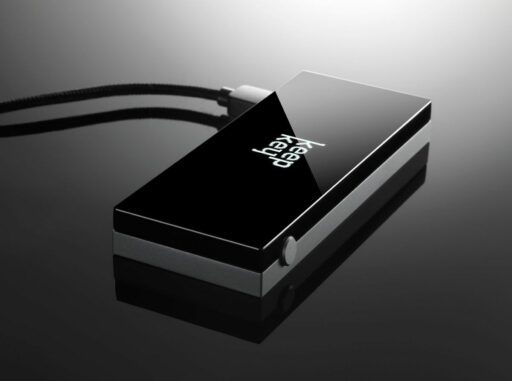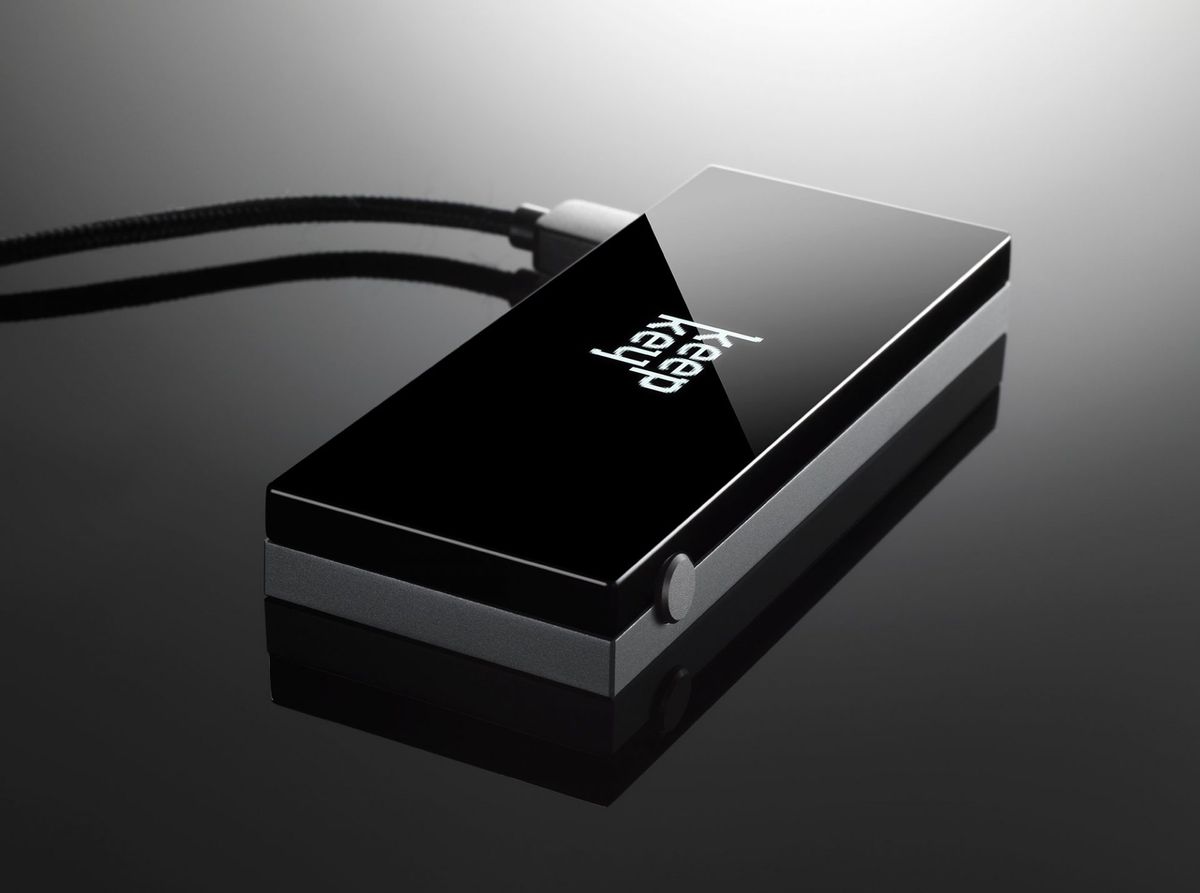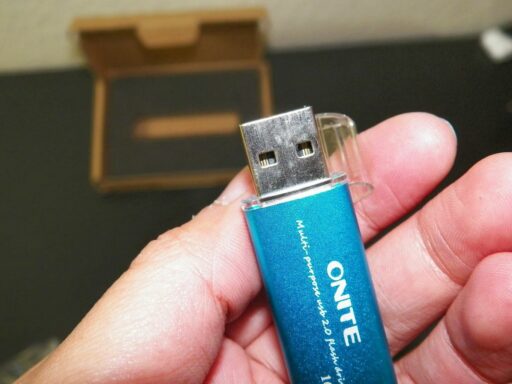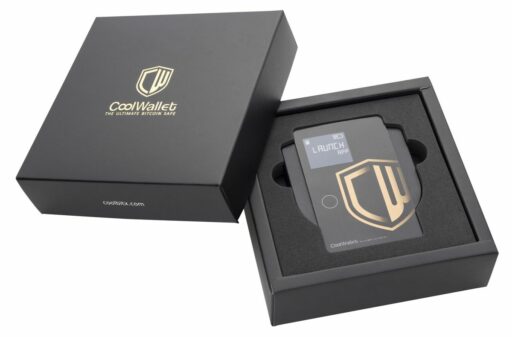In the evolving landscape of cryptocurrency, securing digital assets is paramount. Hardware crypto wallets have emerged as a fortress of safety, offering unparalleled security compared to their software counterparts. This article delves into the reasons why a hardware wallet should be your go-to choice for crypto storage, exploring their security features, user considerations, and operational mechanics, as well as providing a practical guide for getting started.
Key Takeaways
- Hardware wallets provide superior security by keeping private keys offline, reducing vulnerabilities associated with online storage.
- Selecting the right hardware wallet involves assessing security features, storage capacity, compatibility, and the balance between security and convenience.
- The private key isolation, transaction signing processes, and backup options of hardware wallets are central to their ability to protect digital assets.
- Hardware wallets offer a significant security advantage over software wallets due to their cold storage capabilities, minimizing the risks of cyber-attacks.
- Setting up a hardware wallet requires following specific steps and adhering to best practices to maintain security and troubleshoot potential issues.
Understanding the Superior Security of Hardware Wallets


The Offline Advantage: How Hardware Wallets Protect Your Crypto
Hardware wallets, otherwise known as ‘cold wallets’, are the cornerstone of secure cryptocurrency storage. By operating offline, they eliminate the risk of hacking and online phishing attempts, providing a fortress for your digital assets. Unlike their online counterparts, hardware wallets store your private keys in a physical device, akin to a digital safe that is impervious to cyber threats.
The secure element in these devices ensures that your private keys never leave the hardware wallet, even when it is connected to a computer or mobile device for transactions. This isolation of sensitive information from internet-connected devices is what makes hardware wallets a superior choice for safeguarding your investments.
With a hardware wallet, your digital currencies are not just stored; they are protected by a combination of advanced encryption and security features. This added layer of security is what sets hardware wallets apart from software wallets, which are always online and more susceptible to cyber-attacks.
When selecting a hardware wallet, it is essential to consider the security features it offers, such as encryption and two-factor authentication (2FA). User reviews and the reputation of wallet providers can also offer insights into the security track record of a specific wallet.
Comparing Encryption and Security Features
When selecting a hardware wallet, understanding the encryption and security features is essential. Hardware wallets provide an additional layer of security by being offline, which shields them from internet-based threats. They often include advanced encryption methods and the ability to set up two-factor authentication (2FA), which are critical in preventing unauthorized access.
- Two-factor authentication (2FA): Adds a second verification step to ensure the owner’s identity.
- Encryption: Protects your data by converting it into a code that only you can decipher.
- Recovery phrases: Enable wallet recovery in case of device loss or damage.
It’s important to not only look for these features but to understand how they work together to protect your digital assets.
Wallets from reputable providers may also be backed by industry-leading cryptography research, such as the work done with Jean-Jacques Quisquater, which can be a testament to their security standards. Always consider user reviews and the provider’s reputation to gauge the security track record of a wallet.
Real-World Incidents: Lessons from Crypto Exchange Hacks
The history of cryptocurrency is marred by numerous high-profile exchange hacks, each serving as a stark reminder of the vulnerabilities inherent in centralized platforms. The Mt. Gox collapse and the BitGrail incident are etched in the memory of the crypto community, highlighting the risks of entrusting digital assets to third parties.
Despite the best efforts of exchanges to secure their platforms, the reality is that no system is impervious to breaches. The KuCoin, Binance, and HTX hacks are testament to this, with users suffering significant losses. These events underscore the importance of personal security measures for crypto assets.
The adage ‘Not your keys, not your crypto’ encapsulates the lesson that control over private keys is paramount. Without it, investors are at the mercy of the platform’s security and solvency.
Here’s a brief overview of some notable exchange hacks and their impact:
- Mt. Gox (2014): Approximately 850,000 BTC lost or stolen.
- BitGrail (2018): Roughly 17 million Nano (XRB) vanished.
- KuCoin (2020): Over $280 million in various cryptocurrencies affected.
- Binance (2019): Hackers withdrew 7,000 BTC.
- HTX (2021): Significant, but undisclosed, amount compromised.
These incidents serve as a cautionary tale, driving the adoption of hardware wallets that offer a more secure alternative by keeping private keys offline and in the owner’s control.
Choosing the Right Hardware Wallet for Your Needs


Top Industry Picks: A Look at Popular Hardware Wallets
When it comes to securing your digital assets, selecting the right hardware wallet is crucial. The market offers a variety of options, each with its own set of features and security measures. Below is a list of some of the most popular hardware wallets that have been recognized for their reliability and robust security protocols:
- Trezor Model T: Known for its touchscreen interface and support for a wide range of cryptocurrencies.
- KeepKey: Offers a straightforward user experience with a larger display for ease of use.
- BitBox02: A newer entrant with a focus on simplicity and Swiss-made security features.
It’s important to note that while Ledger has been a top contender in the past, recent events have led to its exclusion from this list. Users are encouraged to conduct thorough research and select a wallet that aligns with their security expectations and comfort level.
Each wallet has its own approach to security, from physical buttons for transaction verification to advanced passphrase features. Consider your individual needs, such as the types of cryptocurrencies you hold and your transaction frequency, to find the wallet that best suits your requirements.
Evaluating Storage Capacity and Compatibility
When selecting a hardware wallet, storage capacity and compatibility are crucial factors to consider. A wallet that supports a broad range of cryptocurrencies offers the flexibility to diversify your investment portfolio. It’s important to ensure that the wallet is compatible with the operating systems you use, whether it’s Windows, macOS, or Linux, to facilitate seamless access across devices.
-
Compatibility with Operating Systems:
- Windows
- macOS
- Linux
-
Multi-Currency Support:
- Bitcoin (BTC)
- Ethereum (ETH)
- Ripple (XRP)
- Litecoin (LTC)
- And many others
Having backup and recovery options is fundamental to safeguarding your digital assets. Regularly updating and testing your backup strategy is as important as the initial wallet selection.
In the context of hardware wallets like Trezor and Ledger, the comparison often boils down to user preferences regarding security, ease of use, and the range of supported assets. It’s essential to research wallet options, delve into security track records, and consider user experience before making a decision.
User Experience: Balancing Security with Convenience
When selecting a hardware crypto wallet, the user experience is just as critical as the security features. A wallet that offers a high level of security but is cumbersome to use can deter users from taking full advantage of their digital assets. Conversely, a wallet that prioritizes ease of use over security can leave assets vulnerable.
- Intuitive Interface: Users should look for wallets with straightforward navigation and clear instructions.
- Customer Support: Reliable support is essential for addressing any concerns or troubleshooting issues.
- Accessibility: Wallets should be accessible across different devices and platforms for a consistent experience.
The goal is to find a wallet that harmoniously integrates robust security with user-friendly functionality, ensuring a seamless and secure management of your crypto assets.
Remember, the convenience of a wallet can significantly impact your daily crypto interactions. A wallet that balances both aspects effectively will likely lead to a more positive and engaging experience with your digital investments.
The Mechanics of Hardware Wallets: How They Keep Your Investments Safe


Understanding Private Key Isolation and Protection
The essence of a hardware wallet’s security lies in its ability to isolate the private key from online threats. Unlike software wallets, which store private keys on a device connected to the internet, hardware wallets keep your private keys completely offline. This cold storage method significantly reduces the risk of unauthorized access and cyber theft.
Private keys are the linchpin of cryptocurrency security; they are the alphanumeric strings that empower users to send and manage their digital assets. By keeping these keys offline, hardware wallets ensure that only the rightful owner can initiate transactions. It’s a simple yet powerful barrier against the myriad of online vulnerabilities.
The design of hardware wallets is such that even when a transaction is made, the private key never leaves the device. Instead, the transaction is signed within the wallet and then broadcast to the network, keeping the private key shielded from potential exposure.
Remember, the security of your digital assets hinges on the protection of your private keys. Hardware wallets offer a robust solution to safeguard these critical credentials, providing peace of mind for investors.
Transaction Signing Process: Ensuring Authenticity and Integrity
The transaction signing process is a critical component of hardware wallet security, ensuring that only legitimate transactions are authorized and broadcast to the blockchain. Private keys never leave the hardware wallet, which mitigates the risk of exposure to malicious software or hackers. When a transaction is initiated, the hardware wallet internally signs it using the private key and then outputs a digital signature, which is the only piece of information transmitted online.
The digital signature serves as a proof of ownership and authorizes the transaction without revealing the private key itself. This process is essential for maintaining the integrity of your digital assets and preventing unauthorized access.
Here are some key reasons why the transaction signing process is vital for wallet security:
- It confirms that the transaction has been initiated by the rightful owner.
- It prevents any alteration of the transaction details once signed.
- It protects against unauthorized transactions, even if the device is connected to a compromised computer.
In 2022, malicious smart contract scams led to losses of over $2.7 billion, highlighting the importance of a secure transaction signing process. By isolating the signing process within the hardware wallet, users are shielded from such threats, ensuring that their digital assets remain secure.
Backup and Recovery: Preparing for Worst-Case Scenarios
The importance of robust backup and recovery mechanisms cannot be overstated in the realm of cryptocurrency storage. Having a reliable backup and recovery plan is essential for safeguarding your digital assets against device loss, failure, or theft. Many hardware wallets offer a recovery phrase or seed, a critical series of words that restores access to your funds. It’s imperative to understand this process and keep the recovery information in a secure location.
The process of backing up your wallet involves creating copies of your private keys or recovery phrases. These should be stored in multiple secure locations to prevent total loss in case of an emergency.
Here are some key steps to ensure your backup is effective:
- Test the wallet’s backup and recovery features thoroughly.
- Store the recovery seed phrase in a secure and private place.
- Consider using additional security measures like encrypted backups or multi-signature setups.
- Regularly update your backup to reflect any changes in your wallet.
Hardware vs. Software Wallets: An In-Depth Comparison


The Risks of Hot Wallets: Why Always Online Isn’t Always Safe
Hot wallets, or software wallets, are designed for convenience, providing users with quick access to their digital assets for frequent trading or transactions. However, this constant internet connectivity comes with inherent risks. Hot wallets are vulnerable to cyber-attacks, as they store private keys on devices that are always online, exposing them to potential security breaches.
- Security vulnerabilities: The presence of malware or spyware on an internet-connected device can lead to the exposure of private keys or the manipulation of transaction details.
- Phishing attacks: Users may be tricked into revealing sensitive information or authorizing malicious transactions.
- On-chain threats: Hot wallets are susceptible to attacks that target the blockchain network itself, such as double-spending or 51% attacks.
While hot wallets offer ease of use for daily operations, they should not be used to store significant amounts of cryptocurrency due to their security vulnerabilities. Cold wallets provide a more secure alternative by keeping private keys offline, safeguarding your assets from online threats.
Cold Storage Solutions: The Benefits of Staying Offline
The transition from hot to cold storage solutions like hardware wallets marks a significant leap in securing digital assets. Unlike their online counterparts, hardware wallets such as Trezor and Ledger offer an impenetrable fortress for your cryptocurrencies by keeping private keys completely offline. This isolation from the internet shields your assets from a myriad of cyber threats, including hacking and theft.
Hardware wallets are designed to be immune to malware and spyware, as they never establish a connection to the internet. This absence of interaction with blockchain apps or services further fortifies your assets against malicious smart contract approvals and on-chain threats. In essence, cold wallets are the gold standard for long-term asset protection, offering unparalleled security.
While hot wallets may provide convenience for frequent transactions, they should not be entrusted with substantial funds due to their inherent security vulnerabilities. Cold storage, on the other hand, is the preferred choice for safeguarding high-value crypto assets over extended periods.
It’s crucial to understand that cold wallets are not just about offline storage; they represent a comprehensive approach to digital asset security. By choosing a hardware wallet, you’re opting for a solution that prioritizes the safety of your investments above all else.
Making the Choice: Security Trade-offs and Accessibility
When it comes to securing your digital assets, the choice between hardware and software wallets involves a careful consideration of security trade-offs and accessibility. Hardware wallets, with their robust encryption and offline storage, offer the highest level of security against online threats. However, they may not be as convenient for those who frequently transact in cryptocurrencies due to the need to physically access the device.
Software wallets, on the other hand, provide ease of access and are suitable for active traders. But this accessibility comes with increased risks, as they are more susceptible to online attacks. It’s essential to assess your personal risk tolerance and determine the level of anonymity and privacy you require for your transactions.
Striking a balance between robust security features and user-friendly convenience is key to a seamless wallet experience.
Below is a list of factors to consider when making your choice:
- Security Features: Evaluate the encryption methods and security protocols in place.
- Frequency of Transactions: Consider how often you will need to access your funds.
- Privacy Needs: Determine the importance of anonymity in your transactions.
- Backup and Recovery: Establish a plan for securing your assets in case of device loss or failure.
- User Experience: Ensure the wallet interface is intuitive and meets your expectations for ease of use.
Getting Started with Your Hardware Wallet


Step-by-Step Guide to Setting Up Your Device
Getting started with a hardware wallet is a straightforward process, but it’s crucial to follow each step carefully to ensure the security of your digital assets. Begin by checking your device for any signs of tampering to protect against potential security threats. This initial inspection is a fundamental security measure.
Once you’ve confirmed the integrity of your hardware wallet, proceed to download the necessary application for your device. This app will serve as the interface for managing your cryptocurrencies. For instance, if you’re setting up a Ledger device, you would navigate to the Ledger Live app and install the coin-specific app, such as the Ethereum app for managing ETH and Ethereum tokens.
The final and most critical step is to securely backup and store your seed phrase. This unique set of words is your wallet’s recovery key and must be kept offline in a safe location. Losing this phrase can result in the irreversible loss of your assets, so treat it with the utmost care.
Remember, the seed phrase is the cornerstone of your wallet’s security. Keep it confidential and never share it with anyone.
Best Practices for Maintaining Wallet Security
Maintaining the security of your hardware wallet is crucial to safeguarding your digital assets. Regularly updating your wallet’s software is a key step in protecting against vulnerabilities. Wallet providers often release updates and patches that address new security threats, so staying current is essential.
- Regularly update your wallet software to the latest version.
- Create and maintain multiple backups of your private keys.
- Test wallet functionalities by sending and receiving small transactions.
- Store your recovery seed phrases in a secure and private location.
- Be vigilant against phishing scams and only choose platforms with robust security.
It’s not just about having a secure wallet; it’s about maintaining that security through diligent practices and awareness.
Understanding and implementing these security measures is paramount. Two-factor authentication, encryption protocols, and secure storage practices are your allies in the fight against digital threats. By prioritizing these practices, you can significantly reduce the risk of losing your funds to cyber attacks or unforeseen events.
Troubleshooting Common Hardware Wallet Issues
When using a hardware wallet, users may occasionally encounter issues that can hinder their experience. Understanding the common problems and their solutions is crucial for maintaining the security and functionality of your digital assets. Below is a list of typical issues and troubleshooting tips:
- Device not recognized: Ensure that the wallet is properly connected to your computer or mobile device and that any required drivers or software are up to date.
- PIN entry problems: If you enter the wrong PIN multiple times, the wallet may temporarily lock you out. Wait for the designated cooldown period before trying again.
- Transaction errors: Double-check the recipient’s address and the transaction details. If the problem persists, reset the device and restore it using your recovery phrase.
- Firmware updates: Regularly update your wallet’s firmware to the latest version to ensure compatibility and security enhancements.
Remember, keeping your firmware updated and your recovery phrase secure are the cornerstones of hardware wallet maintenance.
If these steps do not resolve your issues, consult the wallet’s user manual or contact customer support for further assistance. It’s important to address problems promptly to prevent any potential security risks or loss of funds.
Conclusion
In the ever-evolving landscape of cryptocurrency, the security of digital assets remains paramount. Hardware wallets emerge as the champions of this domain, offering unparalleled protection by keeping private keys offline and out of reach from online threats. While software wallets may provide convenience for frequent transactions, the cold storage capabilities of hardware wallets are indispensable for those seeking peace of mind in their crypto journey. As we’ve explored, the choice between different types of wallets ultimately hinges on individual needs for security and convenience. By opting for a hardware wallet, you assert control over your digital wealth and fortify your defenses against the myriad of risks in the digital world. Remember, when it comes to cryptocurrency, the adage ‘not your keys, not your coins’ holds true—investing in a hardware wallet is investing in your financial sovereignty.
Frequently Asked Questions
What makes hardware wallets more secure than software wallets?
Hardware wallets provide superior security by storing private keys offline, away from online vulnerabilities. This isolation from the internet protects against hacking, malware, and unauthorized access, unlike software wallets that are continuously connected to the internet.
How do hardware wallets work?
Hardware wallets are physical devices that securely store your cryptocurrencies’ private keys offline. They can be connected to a computer or mobile device to manage and spend crypto, but transaction validations are performed on the device itself, ensuring security even if the connected device is compromised.
Are hardware wallets immune to cyber-attacks?
While no solution is completely immune, hardware wallets significantly reduce the risk of cyber-attacks by keeping private keys offline. They are designed with secure elements and robust encryption to protect against physical and digital threats.
What should I consider when choosing a hardware wallet?
When selecting a hardware wallet, consider the device’s security features, such as encryption and two-factor authentication, compatibility with different cryptocurrencies, storage capacity, ease of use, and the reputation of the manufacturer. Balancing security with convenience is key.
Can I use a hardware wallet for frequent transactions?
Yes, hardware wallets can be used for frequent transactions. While they offer high security for storing crypto, they can also be conveniently connected to devices for regular use. However, they may not be as instantly accessible as software wallets for on-the-go transactions.
Is it safe to buy a second-hand hardware wallet?
It is not recommended to buy second-hand hardware wallets due to the risk of tampered devices that could lead to theft of funds. Always purchase hardware wallets directly from the manufacturer or authorized retailers to ensure the device’s integrity.






